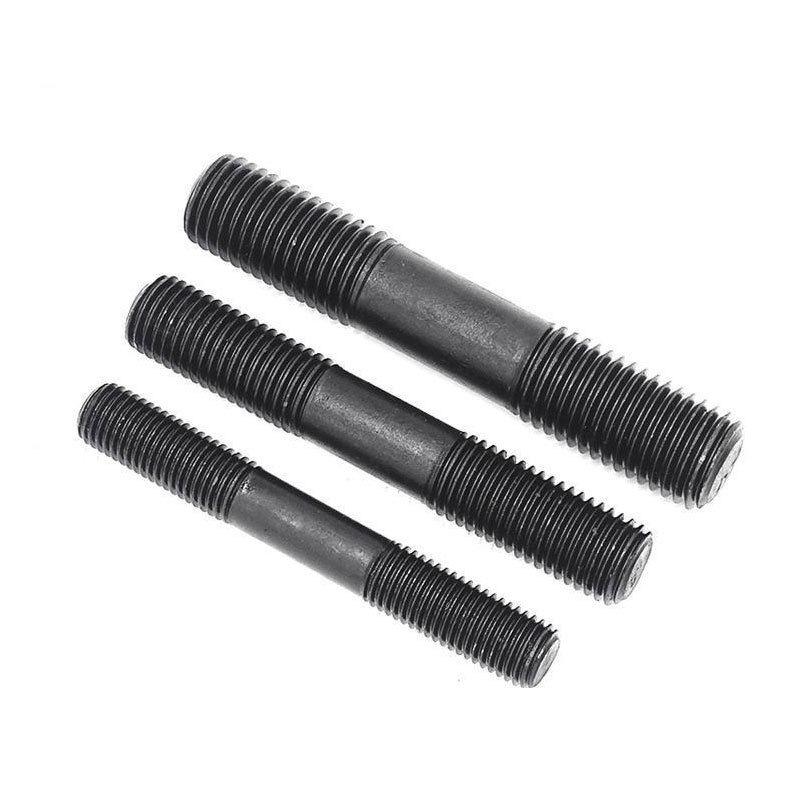

galvanised studding
Nov . 08, 2024 17:08 Back to list
galvanised studding
The Importance and Applications of Galvanised Studding
Galvanised studding, often referred to as threaded rods or bolts, plays a crucial role in various construction and engineering projects. Made from steel, these studs are coated with a layer of zinc to prevent rust and corrosion, a process known as galvanisation. This protective feature extends the life of the studding and makes it a preferred choice in many environments where moisture and corrosion are prevalent.
Understanding Galvanisation
Galvanisation is a method that employs a zinc coating to protect ferrous metals from corrosion. The process typically involves hot-dipping or electroplating the steel in molten zinc or applying a layer of zinc via an electrochemical process. This coating serves as a barrier against corrosion, reducing the risk of infrastructural failure in environments where humidity, seawater, or industrial chemicals are present.
The primary advantage of using galvanised studding is its durability. The zinc coating not only protects the underlying metal but also allows the stud to maintain its integrity over time. Consequently, construction projects benefit from reduced maintenance costs and less frequent replacement of fasteners, making galvanised studding a cost-effective choice in the long run.
Applications of Galvanised Studding
1. Construction Industry Galvanised studding is extensively used in construction for securing and connecting structural elements. Its strength and resistance to corrosion make it suitable for framing, anchoring, and various load-bearing applications. Whether it's in residential, commercial, or industrial projects, galvanised studs are integral to ensuring stability and safety.
galvanised studding

2. Marine Applications Given the corrosive nature of seawater, galvanised studding is often employed in marine and offshore applications. Marinas, docks, and ships utilize these rods for securing structures and equipment, ensuring longevity even in harsh aquatic environments. The ability to withstand saltwater corrosion is crucial in these settings.
3. Automotive Industry Galvanised studding is also found in the automotive sector, where it serves various purposes, including chassis assembly, suspension systems, and engine components. The corrosive challenges posed by weather, road salt, and other elements necessitate the use of galvanised materials to ensure lasting performance and safety in vehicles.
4. HVAC Systems Heating, ventilation, and air conditioning (HVAC) systems often use galvanised studding for mounting and supporting ducts. The zinc coating prevents rust, which can lead to leaks and inefficiencies in HVAC systems. This application highlights the importance of reliable support materials in enhance energy efficiency and air quality in buildings.
5. Infrastructure Projects Galvanised studding is critical in infrastructure projects, including bridges, highways, and tunnels. These structures demand high-strength materials that can endure significant loads and environmental stressors. Galvanised fasteners provide the required strength while ensuring that the critical components remain corrosion-free for decades.
Conclusion
In summary, galvanised studding is an essential component across numerous industries, providing strength and longevity to various applications. The galvanisation process ensures that these fasteners can withstand the rigors of their environments, from construction sites to marine applications. As sustainability and cost-effectiveness become paramount in modern construction and engineering, the demand for galvanised studding is likely to continue growing. Investing in high-quality galvanised studding not only enhances the structural integrity of projects but also contributes to their long-term viability, making it a cornerstone in the realm of building and infrastructure development.
Latest news
-
Best Self Tapping Screws for Drywall - Fast & Secure Installation
NewsJul.31,2025
-
High-Strength Hot Dip Galvanized Bolts-Hebei Longze|Corrosion Resistance&Customization
NewsJul.31,2025
-
Hot Dip Galvanized Bolts-Hebei Longze Metal Products|Corrosion Resistance&High Strength
NewsJul.31,2025
-
Hot Dip Galvanized Bolts-About LongZe|High Strength, Corrosion Resistance
NewsJul.30,2025
-
High-Strength Hot Dip Galvanized Bolts - Hebei Longze | Corrosion Resistance, Customization
NewsJul.30,2025
-
Hot Dip Galvanized Bolts-Hebei Longze|Corrosion Resistance&High Strength
NewsJul.30,2025

